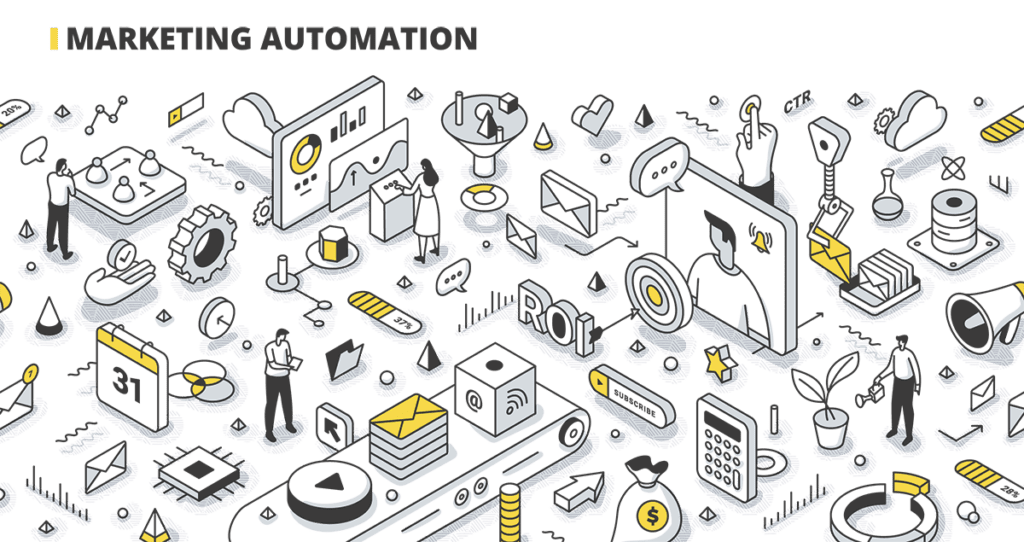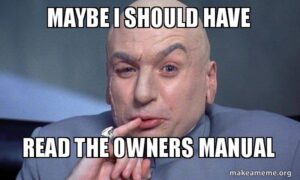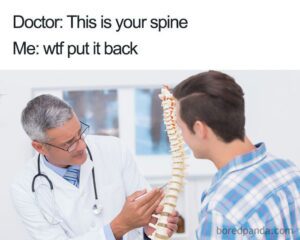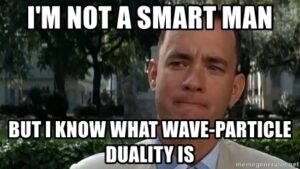
Technology can be a blessing and a curse, sometimes at the same time, and each year seems to bring more tech to marketers. It’s easy to become overwhelmed by all this new martech whizbang stuff that all the cool kids are talking about.
Marketing technology is tough if all you’re focused on is learning all of the features and functionality. I’m here to tell you that none of that matters if you’re not meeting the needs of your clients.
Marketing automation software is a technology with tons of features and functionality. You could spend a week straight just trying to figure out all the stuff that your new platform does, but that would be time wasted.
When you get a new car, do you sit and read the manual cover to cover? If you answered yes to that question, we can never be friends. Sorry.

What Is Marketing Automation?
First, here’s a great overview of marketing automation if you’re not yet familiar with it.
For this post, I will assume you’ve read that and/or have a baseline understanding of what marketing automation is – platforms like HubSpot, Marketo, SharpSpring, GreenRope, Adobe Campaign, Microsoft Dynamics 365, and many, many others.
So we’re all on the same page, here is a marketing automation definition from HubSpot…
“Marketing automation refers to marketing efforts and tasks that have been automated using software. They are typically triggered by a consumer action, like subscribing to a blog, filling out a form, or making a purchase.”
Platforms do not matter as much as meeting the needs of your customers and business does. Marketing automation is a set of tools and functions to better serve your clients and meet your marketing and sales goals.
Marketing Automation Is Your Marketing Backbone
We like to tell clients that marketing automation is the spine of your marketing efforts.

Yes, you can function without a spine, but not well. Your spine holds your central nervous system, protects vital organs, and gives muscles something to hold onto. Plus, it looks cool in a classroom assuming you’ve donated it to science.
Anyway, much like a spine, marketing automation supports all other marketing and even sales operations. Once you dial it in, you’ll wonder how you got along without it.
Buyer Journey Stages
Your customers have high expectations of you, so spend time focusing on who the target audience is, what they need from you, and how you can use the technology to meet those needs.
Buyer Personas
First, become intimately aware of who your target audience is. You can go the distance and develop real buyer personas, or simply put together some fictitious buyer scenarios, just don’t tell Adele Revella you’re doing that.
Do whatever you need to do to make sure you understand as much about them as possible. For example, one of our personas is Jennifer…
- Jennifer is a VP of marketing
- She is in her 40s, has a hectic home and work life, and has little time for dealing with ticky-tack problems
- She’s in charge of managing all and implementing some of the marketing efforts for her organization
- Her focus is advocacy for the members of her organization and growing that membership
- She uses marketing technology to better serve those members but also to drive attendance at events and conversion of new members
- Her two main KPIs for all marketing activities are an increase in membership and a high member retention number
Jennifer is a real person, one of my favorites actually, and I would love to have 5 more Jennifers as clients. I talk to her on a regular basis about her needs, pain points, and what she needs from us.
Knowing these things allows us to better organize the ways in which we use martech to find more Jennifers.
Buyer Journey Stages
Now that I know Jennifer, I can better develop a realistic buyer or user journey. User journeys were originally developed in the user experience world. Software developers would outline a user journey to better develop the functionality of their software.
Buyer journeys are an extension of that. A buyer’s journey will outline all of the steps a buyer will take up to and sometimes through the point of purchase. Below I will outline these in generic terms, fill in the blanks using your own personas.
There are three main buyer journey stages…
Awareness Stage
They know they have a problem and will start off with words like “I need to…” Think of this as the feather in the Forrest Gump journey of them finding you. You want to be that puff of wind that gently sends them in the right direction.

Awareness stage content should focus on the problem and different solution options, some yours, some others. Downloadable content is great during this stage as they look for more information about the problem they need to solve.
But make sure that this content is focused on the problem and not a blatant sales pitch for your solution. It has to have real value for them, for example, “10 things you need to know about fertilizer application.”
Add them to a list when they download. Then, using marketing automation, build a drip campaign that sends automated email follow-ups with more information about the problem and possible solutions they should consider, which leads them to the…
Consideration Stage
The buyer, armed with more knowledge about their need, will start seeking solutions to their problem, and, in doing so, certain options begin to present themselves.
They might start with words like “what tools, best resources, best options for…” and so forth. They will begin assembling a list of possible solutions for their problems that their team can consider.
This is the real shopping, tire kicking, stage. Consideration stage content should focus on solutions. The problem has already been well defined in the awareness stage. This content is about the steps someone might take to solve that problem.
Educational content is perfect for this stage. Informative email newsletters, webinars, podcasts, social media content, blogs, and others are all forms of consideration stage content.
Timing is everything in sales. You need to be in the right place, at the right time, with the perfect bit of information. The modern buyer has a myriad of possible solutions for their problem and will spend lots of time doing their homework.
Consideration Stage Automated Campaigns
Content alone will not do the trick. If they’ve engaged with you in some way, downloaded materials, watched a webinar, attended a conference, or subscribed to your newsletter, use marketing automation to stay in front of them with timely outreach, such as…
- Welcome series campaigns – once they’ve signed up for something, set up an initial drip campaign that tells them about other content relevant to the initial reason they signed up. Don’t waste this “inbox permission” they’ve given you by waiting a month to send them anything. This is where you really get the hooks in them.
- Educational content campaigns – start sending them various educational content at strategic times. This can be a simple newsletter all the way to a content series that is crafted to lead them along the path to purchase. Just make sure it has value and is timed appropriately so they don’t get annoyed.
- Webinars and events – keep them engaged by giving them exclusive early access to webinars, podcasts, and live events. All of this should be useful for them.
Decision Stage
This is the pros and cons phase. They’ve assembled a shortlist of solutions and are looking to make a final choice. If you’ve done your job effectively during the previous stages, you’ll have a much better chance of making the shortlist.
Content for this stage would address concerns and questions about those solutions they’re considering in the previous phase. This is where you address all of their possible issues, concerns, questions about your product or service.
Be honest. The best way to earn a customer for life is to earn their trust. The best way to earn their trust is by being there in their time of need, with the resources they need, in an honest way that lets them know that you are the absolute right solution for them.
I highly recommend reading They Ask, You Answer by Marcus Sheridan. I won’t go into details other than to say that this is the best approach for addressing the fears and concerns that a client might have with using your solution…
Address every fear and concern as honestly and thoroughly as possible.
Decision Stage Marketing Automation Options
Marketing automation is perfect for this stage in the buyer’s journey. The decision stage is where you must convince the customer to become, well, a customer.
We are bombarded daily with a ridiculous amount of content. We’re being pulled in a thousand different directions with distractions at every turn. So, when it comes time to make a purchase decision, you’re not only up against your competitors, you’re also selling to highly distracted buyers.
They need easy answers to their questions and their concerns must be addressed simply and without a lot of BS. Marketing automation can help a great deal with this.
Here are some ways that marketing automation can help your clients make a decision…
- Chatbots can quickly give them access to specific answers to their questions with programmatic answers and links to articles.
- Live chats can give them direct access to product experts who can address concerns that the chatbot maybe couldn’t.
- Automated emails triggered by form submissions, for example, the customer requests someone to contact them about a specific service, and your system sends them some articles or other resources they can review while waiting for contact.
- Abandoned carts and retargeting campaigns. As mentioned earlier, these are distracted people, sometimes they need a reminder that they were about to buy from you. Might seem creepy, but it works and many customers actually come to depend on these features.
I could go on but this post isn’t about features. That’s kind of my point…
Client First, Software Second
If we focus on everything these platforms can do, we’ll get overwhelmed and likely push away from our desks followed by a deep sigh and thoughts about the future.
Just me? Fair enough. The point I’m making here is that software is a tool. Always focus on delivering exactly what your prospects need in the absolute ideal time and place.
You cannot be everywhere, all the time, but marketing automation can be. Use it to meet and exceed the needs of your clients and you will be using it correctly. Use it with the goal of using every feature it has, you will fail.
I know you can do this, I believe in you. Seriously. If you have specific questions about marketing automation or just want to vent, give me a call… 301.383.8351.